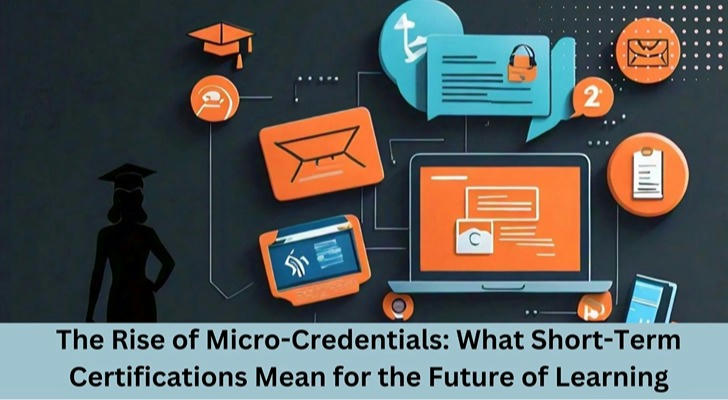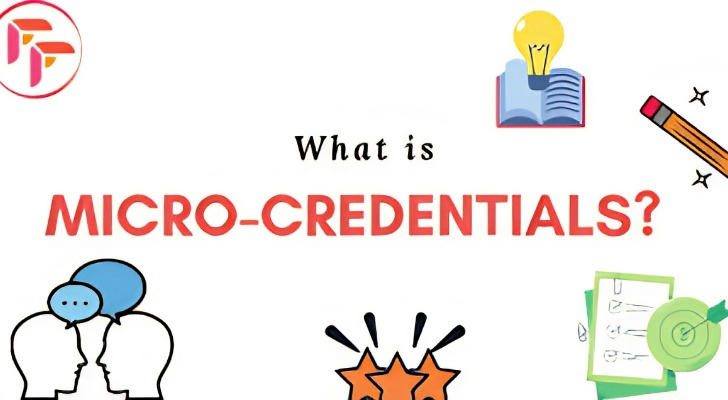The Rise of Micro-Credentials and What They Mean
🚀 A New Era in Learning
Once upon a time, career paths looked like long, winding roads paved with years of university education. But in 2025, that road is getting shorter, more flexible, and surprisingly effective—thanks to micro-credentials.
Micro-credentials, also known as digital badges or short-form certifications, are becoming the Swiss Army knives of modern education. Whether it’s data analysis, project management, or digital marketing, these compact qualifications offer a focused way to gain specific skills—without the lengthy commitment of traditional programs.
According to a 2024 report by the World Economic Forum, over 58% of professionals aged 25–45 have taken at least one micro-credential course. That number is only expected to grow.

🧩 What Exactly Are Micro-Credentials?
Think of micro-credentials as bite-sized chunks of learning. Instead of spending years learning a broad subject, learners focus on mastering a specific skill or concept. These credentials are:
🎯 Skill-specific: Focused on one area, like Excel modeling or cybersecurity fundamentals
⏳ Short in duration: Some can be completed in days or weeks
📱 Digital-first: Issued and verified online through platforms like Coursera, edX, and others
📜 Stackable: Several can combine to form larger qualifications
These features make them especially appealing in a world where agility matters more than academic titles.

📊 The Demand Behind the Trend
Why are micro-credentials gaining ground so quickly? Let’s explore the fuel behind the trend:
1. The Job Market Is Changing 🔧
In the past, degrees served as reliable filters for employers. Today’s employers are increasingly looking for practical skills that meet immediate business needs. A Harvard Business Review study found that 76% of hiring managers believe skills-based hiring is more effective than degree-based hiring.
2. Rapid Technological Shifts 🖥️
Fields like artificial intelligence, blockchain, and digital marketing are evolving too fast for traditional curricula to keep up. Micro-credentials allow people to stay current with industry standards—without waiting for university syllabi to catch up.
3. Lifelong Learning Is the Norm 🧠
A 2023 LinkedIn report revealed that over 45% of workers plan to upskill or reskill every year. Short, focused learning paths allow professionals to adjust their skills to the market’s evolving needs—over and over again.
🕵️♂️ One Big Question: Are They Credible?
While micro-credentials are exploding in popularity, not all of them are created equal. Some key factors influence their credibility:
🎓 Issuer Reputation: Credentials from known universities or professional organizations carry more weight
📈 Industry Recognition: Some badges align closely with in-demand roles and standards
🔒 Verification Standards: Secure, blockchain-based verification methods are helping build trust
According to a Credential Engine survey, 67% of employers are open to considering micro-credentials in place of—or alongside—traditional qualifications.
🔍 Real-World Applications
How are micro-credentials being used in real life?
💼 Career Switching: A marketing assistant takes a UX design micro-credential to pivot into tech
🧑🏫 Teacher Training: Educators earn credentials in virtual teaching techniques
🏥 Healthcare Upskilling: Nurses pick up digital health records management skills through targeted courses
In each case, the learning is goal-driven and often leads to immediate opportunities.
⚖️ Micro-Credentials vs. Degrees
Let’s break down the contrast to understand better:
🏛️ Traditional Degrees
✔️ Deep theoretical foundation
✔️ Broad and structured learning
✔️ Prestigious in certain industries (law, medicine, academia)
❌ Expensive and time-consuming
❌ Less flexible for working professionals
💡 Micro-Credentials
✔️ Fast and focused
✔️ Easier to fit into work schedules
✔️ Constantly updated with current skills
❌ Not yet universally accepted
❌ Can vary in quality
Rather than replacing degrees altogether, micro-credentials often complement them, forming what’s known as hybrid learning profiles.
🧭 Tips Before Choosing a Micro-Credential
Picking the right course can be tricky. Here’s what to look for:
Check Accreditation: Is it offered by a respected platform or university?
Look for Real-World Application: Will it help solve problems in your current job or target field?
Explore Stackability: Can this credential be combined with others to build something larger?
Read Reviews: User experiences often reveal the true value

🌐 A Glimpse Into the Future
With the growth of AI, automation, and remote work, the workforce of the future will need to be more adaptable than ever. Micro-credentials help bridge the skills gap—and they’re doing it fast.
The Organization for Economic Co-operation and Development (OECD) forecasts that by 2030, nearly 50% of all new jobs will require mid-career upskilling. Traditional degrees won’t always fit the bill. The flexibility and specificity of micro-credentials may turn them into the backbone of career development in years to come.
🧠 Small Credentials, Big Potential
Micro-credentials are shaping up to be more than just a trend. They offer a nimble, smart way to stay competitive in a shifting job landscape. Whether it's learning to code, manage teams remotely, or design user experiences, these focused programs open doors to new opportunities—one badge at a time.
📌 In a world that changes faster than a school calendar, the ability to learn quickly and efficiently might just be the most valuable credential of all.
